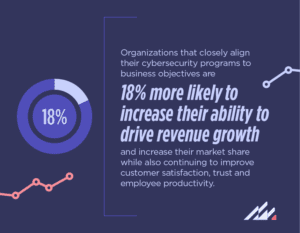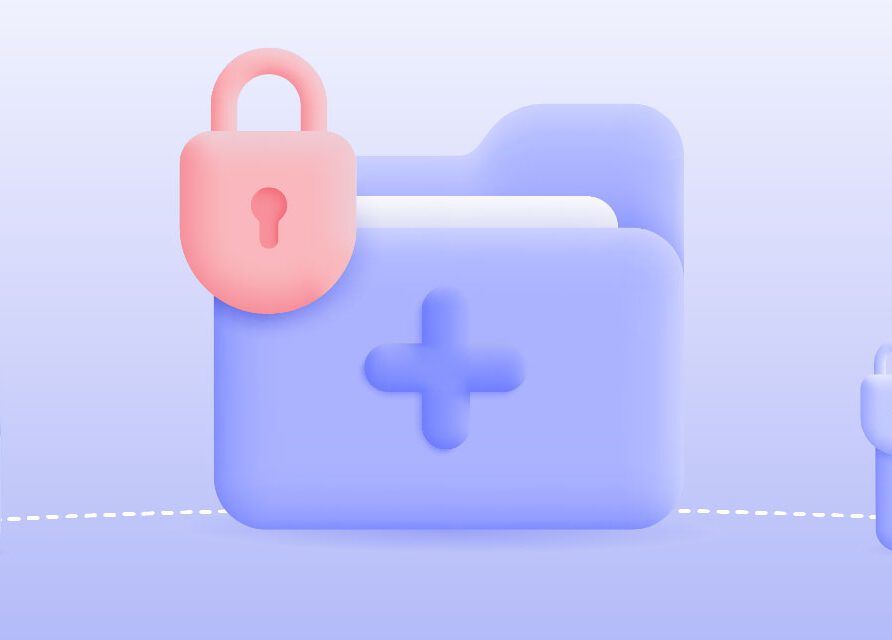Article
Cybersecurity and the bottom line
In 2023, the digital health of an organization is paramount in its pursuit of successful outcomes. More than ever before, organizations are becoming increasingly connected to the internet, with cybersecurity becoming positioned to have far greater impact on the bottom line of a business. In fact, organizations that closely align their cybersecurity programs to business objectives are 18% more likely to increase their ability to drive revenue growth and increase their market share while also continuing to improve customer satisfaction, trust and employee productivity. Let’s take a closer look as to why this is the case.
Direct loss reduction
Having a strong cybersecurity system saves on costs associated with breaches. This concept might seem obvious, but it covers much more than you might think. These costs can be anything from stolen information, stolen revenue, associated fines, repair and recovery costs—even reputational damage and operational disruptions and downtime. According to healthcare-industry-impacts/”>Security Intelligence, a healthcare data breach is among the costliest types of data breach. In data collected from March 2022 to March 2023, the average cost of a data breach across industries was $4.45M, yet the average cost of a healthcare data breach was the highest among all industries at $10.93M. (Many times, these damages can go above these average costs.) The article goes on to report that the healthcare industry has seen a significant cost increase of 53.3% over the past three years. These statistics paint a clear picture—having a strong cybersecurity program can protect against extremely costly breaches that jeopardize both patient data and your organization’s overall well-being.

Cybersecurity: the forcing function
It should be noted that cybersecurity isn’t all doom and gloom. Truthfully, having healthy cybersecurity routines can better position organizations to improve other key practices, such as asset inventory, monitoring overall system health and retaining diligent logs and backups. Healthy cybersecurity requires an organization to understand itself and how it interfaces with the digital world. This understanding can have a positive impact on the whole organization by avoiding costly redundancies. For example, if three teams within an organization use three different software tools for the same function, having a strong digital understanding in an organization can point this problem out and have teams using the same program to save money on licensing. Also, digital monitoring can identify areas with performance issues, enabling examination and remediation. For instance, if a system supporting an online store is having issues, the quicker those issues are fixed, the less time customers are unable to purchase goods and services. Lastly, logs and backups can instill strong practices regarding internal documentation of processes, procedures and best practices, enabling organizations to improve their organizational habits, increasing efficiency and decreasing disruption of onboarding new employees.
From reactivity to proactivity
Considering the rate of change across the digital landscape, if cybersecurity programs aren’t proactive, they will be forever behind. Being proactive can also enhance business operations through several key concepts. First, having a strong foundation of processes and procedures makes an organization more resilient when problems arise. If less time during daily operations is spent fixing problems and putting out fires, users will be able to spend more time, energy and attention toward performing their expected duties. This will, in turn, help improve the organization’s outcomes. In addition, proactivity can lead to quicker innovation and product development since the organization is anticipating the needs of its clients rather than waiting for product improvement suggestions to start the research and development process. Proactive organizations are better positioned to take advantage of emerging market opportunities because they are actively looking for them rather than waiting for them to appear by serendipity. All of this means proactivity enables the culture of an organization to focus on patient care and the organization’s mission for driving better health across its community.
Considering the impact cybersecurity can have on an organization’s bottom line, it’s essential to keep a watchful eye on how your cybersecurity program measures up in its ability to drive revenue growth and increase market share while improving customer satisfaction, trust and employee productivity. At Altera Digital Health, we are vigilantly focused on helping our clients produce strong financial outcomes. To learn more about this commitment, read our thoughts on Revenue Cycle Management excellence here.













